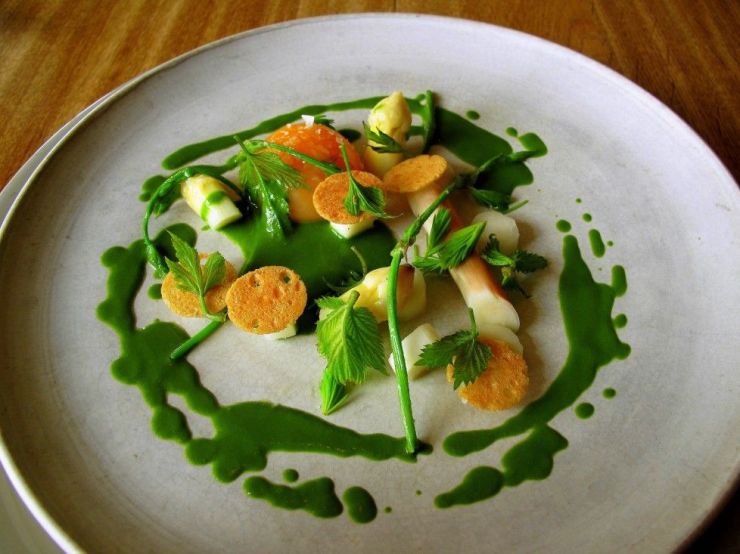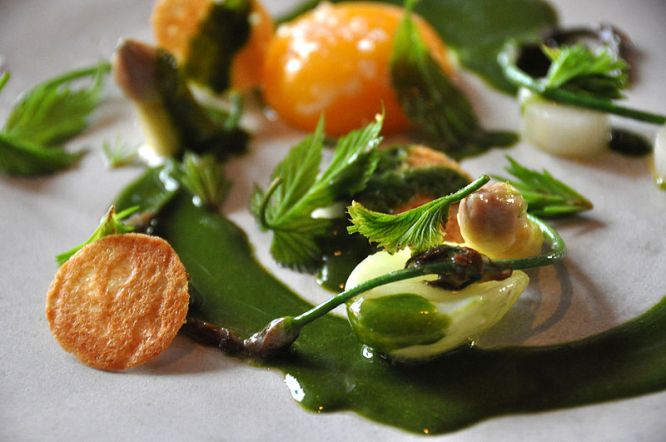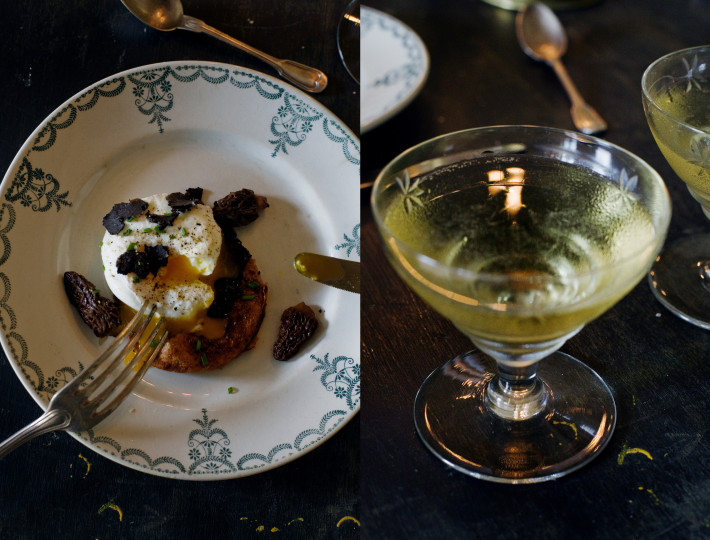More and more, we are realising that how we eat affects our DNA. Simply put, DNA is the carrier of genetic information that you received from your parents and that builds that hardware of your body. It also carries the genetic information that you will pass on to your children, and certain genes can be switched on, switched off and damaged depending on your lifestyle and experiences. This not only impacts your health in the present, but will also affect the robustness and resilience of your unborn children. I believe that we should approach health in the same way that we approach wealth – as something to be refined and strengthened, with well thought through investments, until it’s passed along to our children. There are many lifestyle and environmental factors which can impact DNA, however in this article we will just focus on diet.
I believe that those in the elite society have this knowledge of how to activate the gene-protecting potential of food. I’ve spent years studying the eating habits of the elites, and I’ve also dabbled in the dining halls of elite institutions in London, Paris and Geneva. I’ve studied nutrition and epigenetics and I believe that dining culture in elite societies is no accident – the menu is specifically designed to yield the greatest outcome for investment. And once you understand the principles behind the diet, you too can apply these into your life (hopefully at a fraction of the cost!).
Strategy 1 – eat organic and local
When the journalist Jackie Wullschlager got the opportunity to dine with multi billionaire Jacob Rothschild, she got a tiny glimpse into the dining habits of the elite. When describing his ancestors, Rothschild explains that ‘genetically, they got lucky’, and the family are notorious for remaining robust and productive into their late years. The 73 year old was drinking Château Duhart-Milon 2000, a deep and rich wine from the famous Bordeaux region of France. The wine was followed by roast chicken, pan-fried potatoes, brussels sprouts, and carrot and swede puree. He describes these vegetables as being sourced from the Rothschild estate where they dined. Elite families do not buy from big agriculture, staying away from mono-cultured, nutrient deficient and chemical laden foods. Most elite families have their own organic gardens which are staffed by professional horticulturalists who know how to yield the most nutrient-dense and flavoursome produce. These gardens are often on the estate, so produce goes from farm to table within a few hours at most – minimising a lot of the nutrient depletion which often happens to fruits and vegetables in transit. Store-bought foods are often laden with chemicals.
We know that environmental toxins, such as pesticides found in non-organic foods, are associated with epigenetic modifications. This means that they could be affecting how your DNA expresses itself, hindering it’s ability to heal the body and protect it from disease. Endocrine Disrupting Chemicals, such as those found at all levels of the mainstream food chain (from pesticides to food processing equipment) have an especially strong link with cancers.
It’s probably unrealistic for most of us to all have our own fully-staffed organic gardens. But there are things you can do to mimic this elite eating habit. First and foremost: extricate yourself from big agribusiness! I would highly recommend cultivating your own herb garden (which is possible even in the smallest of apartments). Once you’ve mastered this, try to grow small vegetables. Shop at organic markets, be conscious of where your food comes from and try to buy as local as possible. These are simple actions, but bring you one step closer to emulating the cuisines of the elite society (for a fraction of the cost).

Wild, fresh and hand picked at Noma restaurant in Copenhagen.
Strategy 2 – eat wild species
One of my favourite hobbies is studying Michelin-star restaurants to see what’s on the menu. The restaurant that’s captivated the imaginations of the dining elites for the last several years is located in Copenhagen, Denmark, and uses seasonal, wild foods foraged from the nordic landscape. The menu at Noma features moss, ants and mould, alongside more conventional foods such as seafood, wild game meats, and nordic herbs. This brings me to the next strategy in dining like the elites – eat wild species. Noma restaurant in Copenhagen is tapping into deep culinary wisdom known throughout elite dining circles – that landscape harvested wild foods are the most flavoursome and nutritious foods on the earth, and research is showing that they can protect your genes while healing the body. And it’s paying off – Noma has been named the ‘World’s Best Restaurant’ four times*.

Noma restaurant in Copenhagen – fresh, wild herbs foraged from the landscape.
From nasturtium flowers to sea buckthorn to venison; wild plants and animals often feature on the plates of elite society. They contain flavours which aren’t normally found in domesticated varieties, and to those who aren’t used to them, they can be almost unpalatable at first. These flavours are bitter, sour, earthy, musky, astringent and gamey. And they are indicators that the food is dense in nutrients and ultra fresh.
Wild food are robust, and this enables them to survive outside of cultivated environments, independent of pesticides, herbicides, and all of the machinery required in modern day farming. Your romaine lettuce isn’t going to escape your garden and start growing wild in the forest beside your house. Have you ever wondered why this is? Why do we see nasturtiums, dandelions and mallow growing wild, despite humanities best efforts to pluck, prune and poison them into non-existence! Whereas with our commonly consumed vegetables – lettuce, cucumber and tomato’s – it can seem like enormous toil just to get them to grow. It may shock you to learn that it’s because most of the fruits and vegetables that we eat are not ‘natural’ foods, but rather a product of hundreds or thousands of years of selective breeding (or genetic engineering). Much of this breeding has removed the strong flavours contained in wild foods, while also greatly reducing the nutritional content. For example, the wild Dandelion has almost 10 times the amount of vitamin C and vitamin E as the selectively bred and nutritiously poor butter lettuce.
Let’s peruse the menu of one of the most renowned restaurants in Gstaad (an upscale and elegant Swiss resort town) – The Chesery. We see caviar harvested from wild fish, truffles, wildly caught sea bass, venison, pigeon and wild bilberries. And the reason that wild foods retain a central place on the plates of the most gourmet restaurants in the world is because they are superior – in both taste and nutrition.
Chestnut pancakes with shallots, poached egg, truffle and morel mushrooms
Image taken from manger.com (Credit: Mimi Thorisson).
Eaton (2008) found that wild foods had several advantages over the foods that we see in supermarkets today.
- On average, they are more nutrient dense. This includes vitamins, minerals, and fiber. These are needed by the human body for innumerable reasons and several vitamins (e.g., A, C, D, E) are antioxidants with cancer-protective properties.
- On average, they are richer sources of beneficial phytochemicals. These plant chemicals can influence bodily metabolic reactions and some (e.g., flavonoids) have potent antioxidant activity.
- On average, they supply a more balanced ratio of ω-6 to ω-3 fatty acids (note: ω is the Greek lowercase letter omega).
- On average, they provide less energy per unit weight (i.e., they are less calorie dense).
Although elite chefs may select wild foods for quality and flavour, I believe that elite families opt for these foods because of their nutritional abundance. Tiffon (2018)* found that bioactive food components can trigger protective epigenetic impacts through life. This is especially true for pregnant women, as research has shown that following a conventional western diet while a child is in utero may lead to physiological dysfunctions caused by epigenetic changes.
How to mimic this elite eating habit on a budget? Forage wild foods from your local landscape. Go with a group if you’re unsure of what is safe to eat. Research the species of food that you eat. Where did it come from? What was it’s wild form before it was domesticated into what it resembles today? Research foods which are as close as possible to their wild variant, as they will most likely have the richest vitamin and mineral content. Shop for heirloom varieties at your local market. Heirloom foods are those which were commonly grown during earlier periods in human history, which which are not used in large-scale agriculture. They will therefore be closer in vitamin and mineral composition to wild foods.
I truly believe that you are what you eat – food feeds your cells and build your body! Your relationship with food is one of the most intimate that you’ll have in your life – it enters into you and creates, protects and heals you. If you want to be a high quality person, eating high quality foods is a non-negotiable. Wild foods are robust, resilient, can live and thrive in extreme environments in ways that our domesticated varieties never could. To embody these qualities, you need to eat these foods. It’s no coincidence that this is how the elites eat. I hope that you’ve found this article helpful, I will be diving deeper into habits of the elite that you can incorporate into your life to enhance your health and wellness.
*World’s 50 Best Restaurants – William Reid business media.
Further reading:
Tiffon, Celine. ‘The impacts of nutrition and environmental epigenetics on human health and disease”. International journal of Molecular Sciences. 2018, Nov 19.

